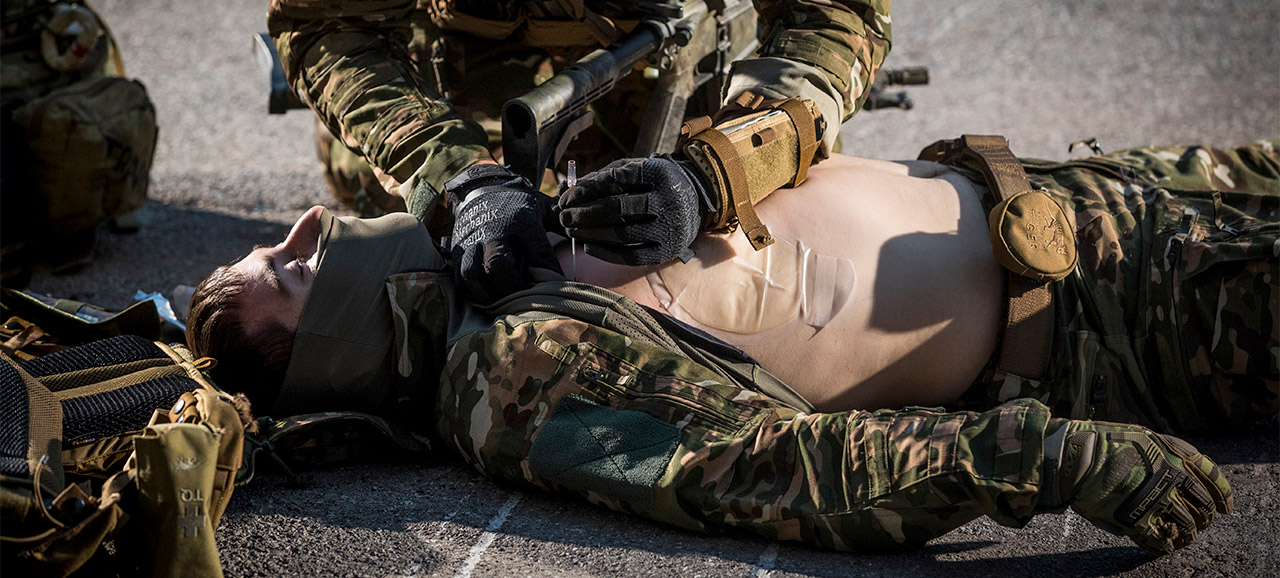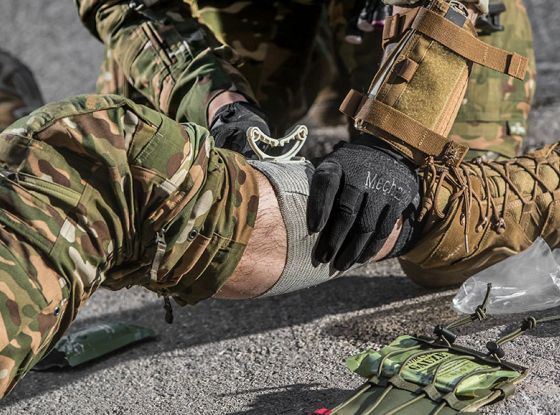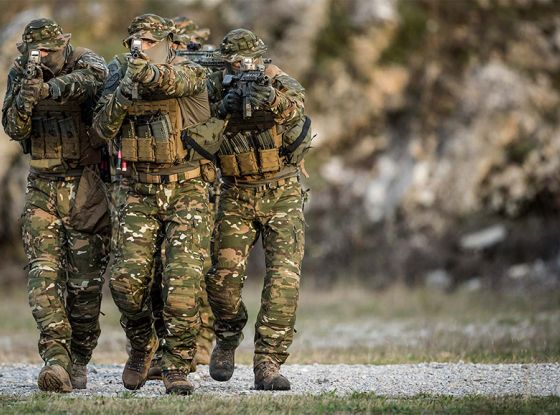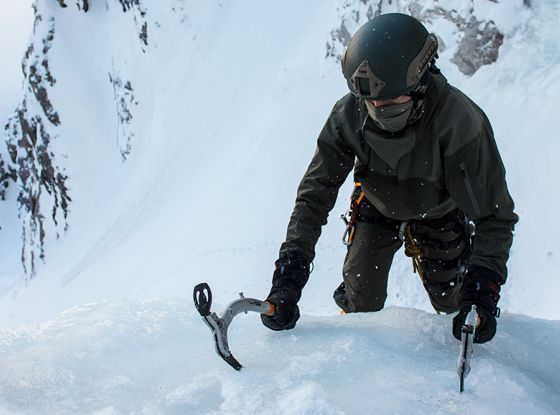While working through the M.A.R.C.H. algorithm you discover a “hole in the box”. The way you’ll save his life is by performing a needle catheter decompression—NCD, for short. NCD is an emergency medical treatment and, if performed properly, usually buys the casualty enough time for a medivac trip to the nearest field hospital. But you do have to watch out for things that can go fatally wrong, like a catheter that becomes kinked or clogged. This blog post covers the basics of NCD: when to use it, how to do it right, and what to expect.
Jump to the sections below if you’re already familiar with this topic and just need to refresh your knowledge, or if you’re only interested in learning about a specific step:
Introduction
You are through the CUF phase. Now you’re going into TFC, knowing that this can jump back and forth. Working through the MARCH PAWS assessment process you get to “Respirations” and discover your injured teammate has a “hole in the box.”
Being one of the good guys, you plug the hole with an occlusive dressing.
Either because you can see a hole in his chest or you know the mechanism of injury, you suspect your guy has sustained a tension pneumothorax.
Any of these accompanying signs and symptoms add to the suspicion of a tension pneumothorax:
- Respiratory distress,
- progressive tachypnea,
- jugular vein distention,
- decreased breath sounds on the affected side of the chest,
- shock,
- drop in blood pressure,
- decreased chest movement on the affected side.
Tension pneumothorax is a life-threatening emergency.
What is tension pneumothorax?
Tension pneumothorax is a situation where air accumulates in the chest but is unable to vent, resulting in a continuing build-up of intrathoracic pressure.
The increasing pressure on the injured side pushes all the structures in the mediastinum (heart, trachea, vessels) to the opposite side of the chest.
This causes the vena cava to kink, which then impedes venous return of blood to the heart (the blood that backs up produces the jugular vein distention that you observe).
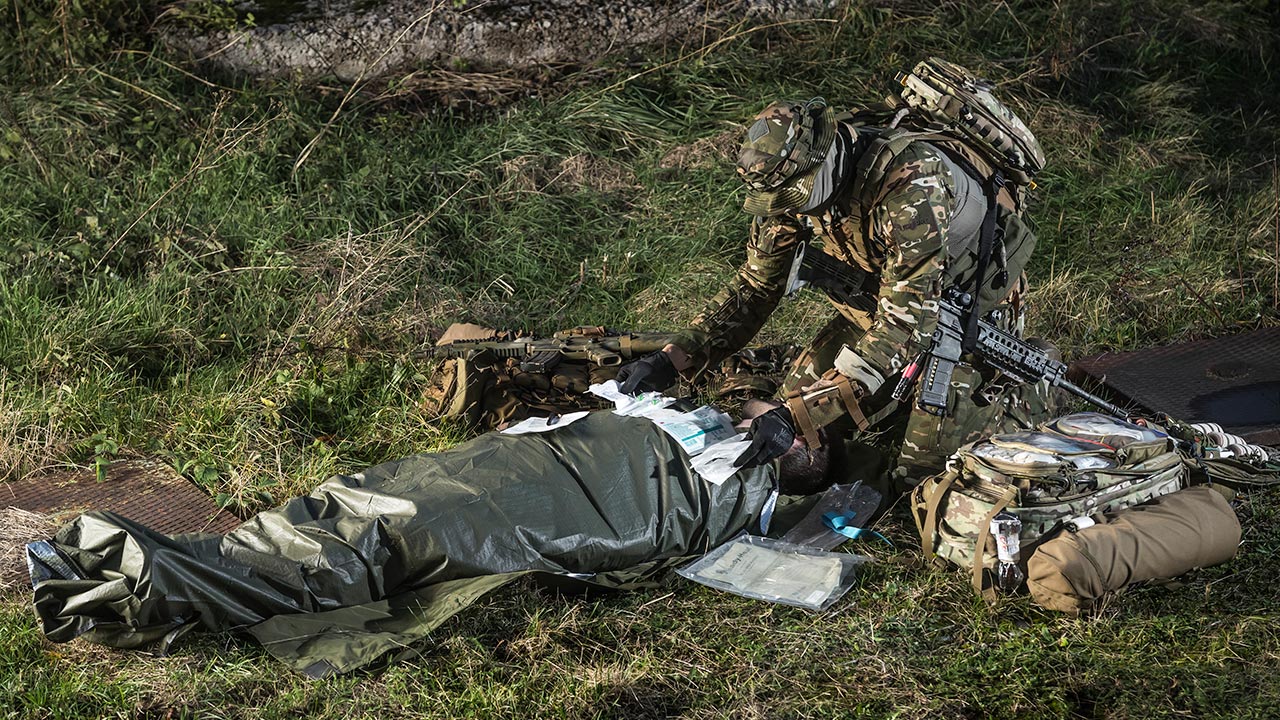
While this is occurring, the heart becomes starved for blood. Consequently, cardiac output decreases (causing blood pressure to drop even lower).
As the pressure builds, the trachea deviates to the uninjured side (although this usually occurs only at the time of death, so it’s a sign relatively useless to us).
But the decrease in cardiac output is something we need to be cognizant of because it produces his causes respiratory difficulties, shock and death.
Which treatments are effective?
Having sealed the hole, you can now begin performing a Needle Chest Decompression (NCD).
But before you go to NCD, you should consider a less-invasive technique known as “burping the wound”.
This would likely be your best bet if you don’t have a needle available.
What you do is lift one edge of the seal, roll it back to expose the wound, and allow the tension pneumothorax to decompress—burping the wound, in other words.
Then put the chest seal back on so air can no longer enter the pleural space through the wound site.
The vented chest seal is supposed to allow air to escape from the chest cavity, but this may not happen, so never rely on the equipment.
Treat the patient with your knowledge and not with your equipment. Monitor the patient for signs of difficulty breathing.
As noted, the more invasive option is NCD. It’s utilized to relieve the pressure, but this is not a final step—the only things it does is buy some extra time.
Your guy needs to be evacuated from the scene ASAP because he needs a chest tube inserted, and the best place for that to happen is the nearest field hospital.
How to perform NCD
The site for a needle chest decompression is the second intercostal space on the midclavicular line, just lateral to the nipple line.
It is important to insert the catheter laterally in relation to the nipple line to ensure that you stay outside of the cardiac box (which holds a lot of really important vessels).
You also need to keep in mind that the first rib lies under the clavicle.
Use a large bore, 10 G to 14 G catheter at least 3.25 inches (ca. 8 cm) long to decompress the chest. Clean the site with alcohol swipes, insert the needle using the third rib as a backboard.
What you want to do is locate that third rib by tapping it and then “riding” it up into the second intercostal space, just above the third rib where it advances into the pleural cavity.
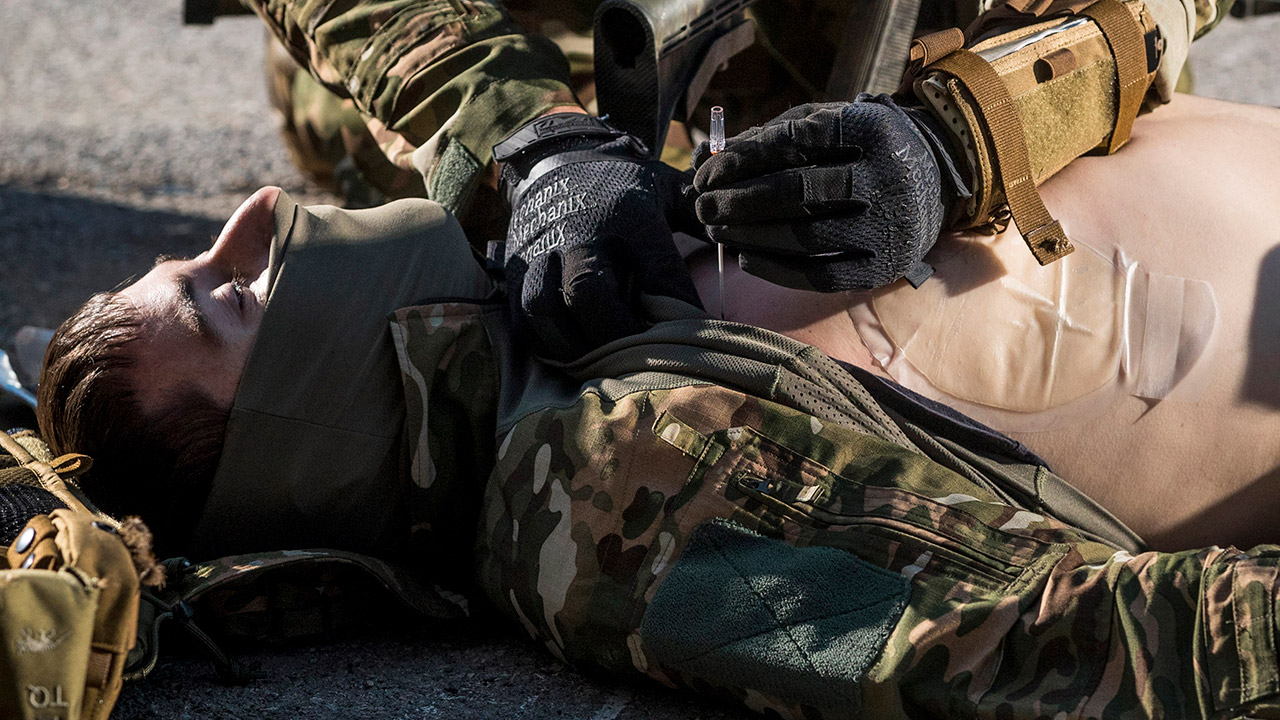
The reason for inserting above the third rib is that it avoids the vein, nerve and artery present below every rib.
Once in the pleural cavity, advance the needle down to the hub, wait 10 seconds, then remove the needle while leaving the catheter in the body. Check the patient for signs and symptoms of relief.
If for any reason you can’t insert through the second intercostal space, chose instead to insert through the fifth intercostal space.
Depending on the casualty’s age and girth, the most likely insertion site there will be along the anterior axillary line and lateral to the nipple.
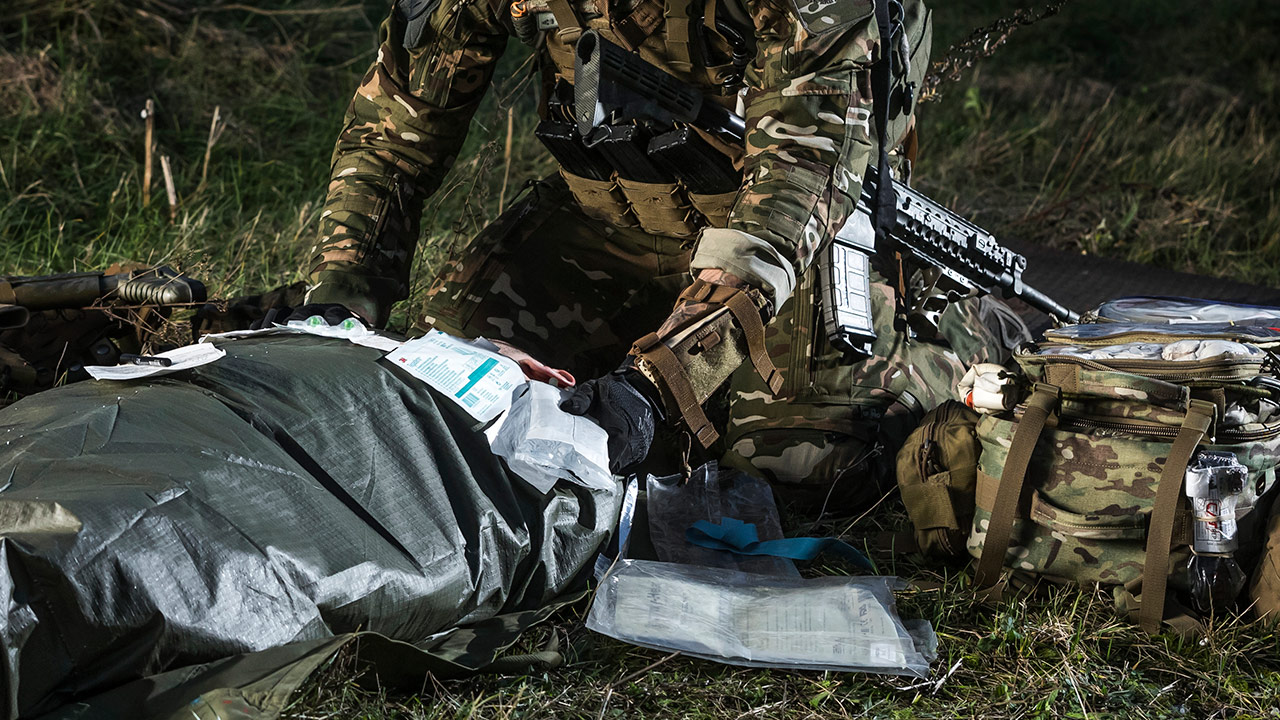
Both sites are good and equally usable, so don’t think of them in terms of primary and secondary choices.
Just remember that whichever one you choose, use the rib as a “backboard” and enter above the rib, advance to the hub, leave in place for 10 seconds, remove the needle but leave the catheter and then re-evaluate the patient.
Be aware that anterior axillary catheters have a tendency to kink because of the way the casualty’s arm is likely to be positioned while he’s in the litter, so monitor closely for re-accumulation of tension.
Also recognize that it’s possible to perform NCD on a casualty while he’s still wearing body armour. There are pros and cons to doing this, and you’ll need to weigh them before deciding whether to go for it with body armour on or off.
Get more intel on how to do an NCD protocol in this Combat Medic Essentials video.
Once the whooshing stops, rotate the catheter a quarter-turn and reassess (doing so might unbind the catheter if it’s kinked).
If after the quarter-turn there is still no whoosh, check the casualty to see if he is breathing easier—if he is still having difficulty breathing, perform another NCD.
Leave the catheter in place to let air escape. That will prevent another tension pneumothorax from developing. In any event, be prepared to do another NCD because the catheters can easily kink or clot.
Do not insert the catheter through a chest seal covering the site you’ve chosen for the NCD. Instead, slightly roll the edge of the chest seal enough to make room for the NCD.
If you’re unsure whether you can make it work at that particular location, chose a different site.
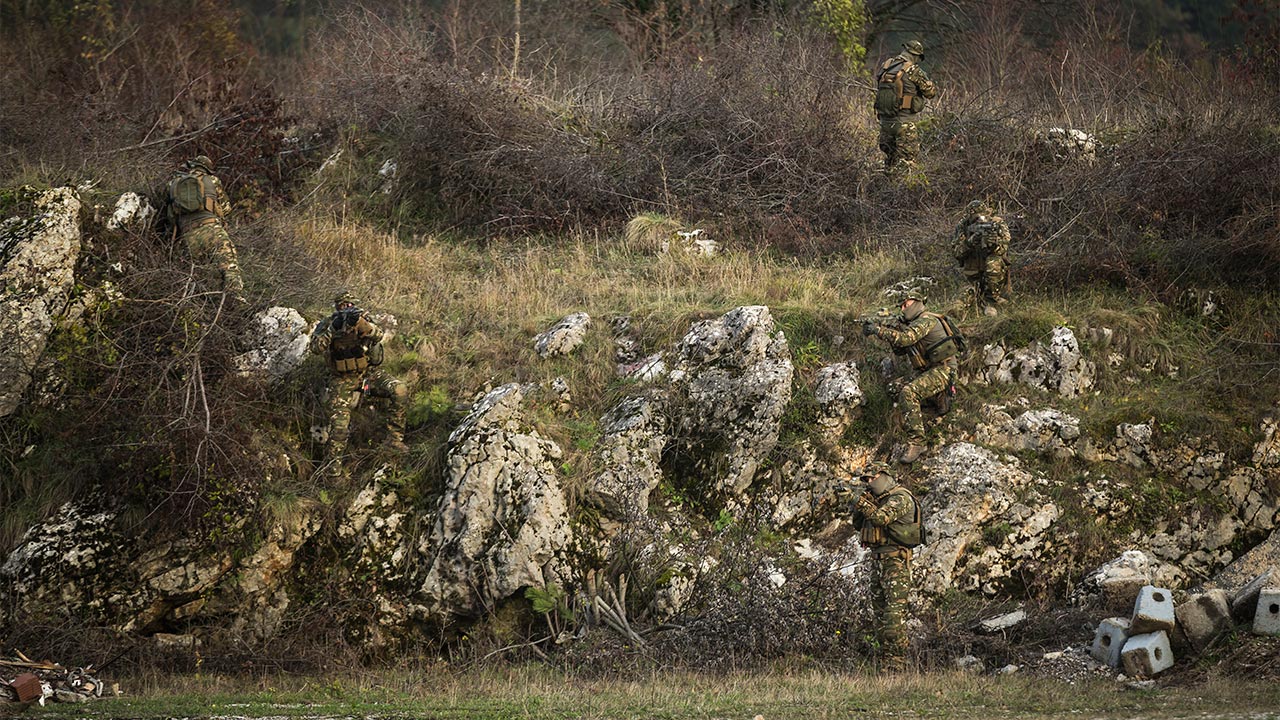
Conclusion
In some instances, it will be necessary to perform needle chest decompression multiple times on the same casualty, as time allows.
Multiple attempts become necessary when the catheter kinks, becomes obstructed by a clot, or in some other way fails to serve its intended purpose.
At all reassessments, evaluate your treatments for effectiveness. Check chest seals for suck and blow. Observe whether the needle chest decompression produces a whooshing sound.
If there is no whoosh, twist the catheter 90 degrees and listen for it.
Further, evaluate your patient for signs of a redeveloping tension pneumothorax. And if it appears he needs a second NCD, do it immediately adjacent or at another site.
When completed, reassess the patient. Perform all the assessment steps and don’t forget to look for signs of a tension pneumothorax recurrence (if you detect that such is happening, perform another decompression).
Signs of a successful NCD are:
Respiratory distress improves,
obvious hissing or whooshing sound as air escapes from the chest when NDC is performed,
return of radial pulse,
return of consciousness,
pulse oximetry showing haemoglobin oxygen saturation has increased to 90% or greater.
Most important, “Primum non nocere” - "first, do no harm." Use common sense and if you have any concerns, go according to the TCCC guidelines or according to your unit’s/country’s SOP.

